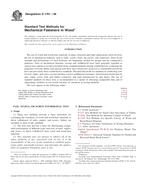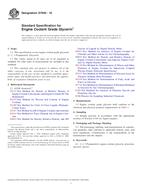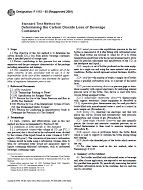1.1 These test methods cover the creep behavior of intact soft and hard rock core in fixed states of stress and temperature. They specify the apparatus, instrumentation, and procedures for determining the strain as a function of time under sustained load. Hard rocks are those with a maximum axial strain at failure of less than 2 %. Soft rocks include such materials as salt and potash, which often exhibit very large strain at failure.
1.2 This standard replaces and combines the following Standard Test Methods now to be referred to as Methods:
Method ‘A' (D 5341 Creep of Hard Rock Core Specimens in Uniaxial Compression at Ambient/Elevated Temperatures);
Method ‘B' (D 4405 Creep of Soft Rock Core Specimens in Uniaxial Compression at Ambient or Elevated Temperature); and
Method ‘C' (D 4406 Creep of Rock Core Specimens in Triaxial Compression at Ambient or Elevated Temperature).
1.3 All observed and calculated values shall conform to the guidelines for significant digits and rounding established in Practice D 6026.
1.3.1 The method used to specify how data are collected, calculated, or recorded in this standard is not directly related to the accuracy to which the data can be applied in design or other uses, or both. How one applies the results obtained using this standard is beyond its scope.
1.4 The values stated in SI units are to be regarded as the standard. The values given in parentheses are mathematical conversions to inch-pound units that are provided for information only and are not considered standard.
1.5 This standard does not purport to address all of the safety concerns, if any, associated with its use. It is the responsibility of the user of this standard to establish appropriate safety and health practices and to determine the applicability of regulatory limitations prior to use. For specific precautionary statements, see Section 7.
Product Details
- Published:
- 07/01/2008
- Number of Pages:
- 6
- File Size:
- 1 file , 100 KB
- Redline File Size:
- 2 files , 200 KB


